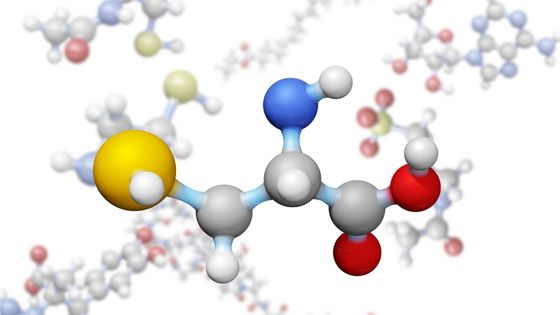Adipic acid is an organic compound with the formula (CH2)4(COOH)2, which is a C6 straight-chain dicarboxylic acid. Almost all commercial adipic acid is produced from cyclohexane. It is also referred to as hexanedioic acid and is naturally present in beets and sugar cane.


It appears to be a white transparent, fine, particle crystalline compound with the molecular formula C6H10O4. It is somewhat water-soluble and soluble in alcohol and acetone. The acid is slightly toxic. The solid melts at 152ºC. Its molar mass is 146.14 g/mol, and its density is 1.36 g/cm³. Its melting and boiling points are 152 °C (425 K) and 337 °C (610 K), respectively. It is flammable and has a flash point of 232 °C.
It is mainly used to produce nylon 66 that has a protein-like structure and gets processed further to make fibres that finds application in automobile tire cord, carpeting, and clothing. It is also used for making plasticizers, lubricant components, polymers, coatings, and detergents. It also finds use as a gelling aid, an acidulant, and a leavening and buffering agent in food-grade applications.
The Adipic Acid Applications Driving Its Demand Are As Follows:-
A Precursor for Nylon
Adipic acid’s most common application is as a starting material for synthesising nylon. Nylon is made by industrial chemists by reacting adipic acid with hexamethylene diamine. The nylon formed is further used for several applications, such as plastics, fibres, filaments, and food packaging materials. It also has usage in the production of other polymers like polyurethanes.
Medicinal Use
Even though adipic acid does not have any application as a therapeutic agent, it still finds application in the medicinal and pharmaceutical industries. It is added to drug tablets to help with a controlled release of acidic and basic drug compounds both. In case of the acid not being present, the drugs get released at once in the body.
In Food Applications
In the food industry, Adipic acid works as a flavouring and gelling agent both. In bottled beverages, acid is added as the main acid to provide the product with a bubbly fizz. In fruit juice and gelatin products, it also adds a tart flavour. The organic acid is employed in several powdered food and drink mixes, giving them a sweet flavour. It enables jam, gelatin and jelly to jiggle while holding their shape. In cheese, it gives texture; in baking powder as a leavening agent and in cake mixes and baked goods. Also, the acid is added to edible oils to delay the time taken by bottles to become rancid. It is also included as a food acidulant in products.
Other uses of the acid include working as a monomer to produce nylon using a polycondensation reaction with hexamethylene diamine forming 6,6-nylon. It is also employed as a reactant for making plasticisers and lubricant components.
Production Process of Adipic Acid
- From Cyclohexene via Oxidative Cleavage: adipic acid is produced from cyclohexene through the oxidative cleavage process. The process takes place using hydrogen peroxide that forms adipic acid and water as a waste product.
- From Cyclohexanone and Cyclohexanol via Oxidization: The production of adipic acid is done using cyclohexanone and cyclohexanol via oxidation which combined is known as KA oil (ketone-alcohol oil). During the process, many steps take place to oxidise KA oil with the help of nitric acid, which results in the production of adipic acid with by-products glutaric and succinic acids.
- From Butadiene via Carbonylation: adipic acid is produced via carbonylation from butadiene. During this method, adipic acid is produced as a result of the carbonylation of butadiene.
The Prominent Adipic Acid Market Players
- Asahi Kasei Corporation
- Ascend Performance Materials LLC
- Lanxess AG
- Solvay SA
- Invista (Koch Industries, Inc.)
Adipic Acid Price Trend Analysis Based on Region
North America
Recently, the Adipic Acid price grew before falling in the US market. In the beginning, the product’s cost was raised by manufacturers due to increased orders from buyers. In spite of the declining prices of feedstock, the Adipic Acid price grew because of tight availability and ongoing orders from the downstream sectors. The costs of petrochemical products drove north as a consequence of high inflation and rates of interest in the US. The holiday season lowered the demand from end-use textile and electrical & electronics industries. Furthermore, as a consequence of inflation, regional consumers chose to adopt the wait-and-buy sentiment.
APAC
The Adipic Acid price declined in Asia recently. The downstream business’s interest was a low and bountiful product stockpile in the domain, lowering the Adipic Acid price. In addition, the upstream Benzene and feedstock Cyclohexanone prices dwindled in Asia, helping the downstream industry’s costs. The downstream PA66 market stayed flat, and the market drove south. In addition, the Adipic Acid inventory in the domestic market was elevated, and a few Chinese facilities’ rates of operation of PA66 textile filament manufacturing were reduced. A few of the plants for the commodity closed down in China for maintenance. Meanwhile, in India, the uniform stockpile from traders, along with excess availability, lowered the product’s expense. The industry witnessed lesser orders from end-use industries in the end.
Europe
In the initial months, the Adipic Acid price in Europe rose; however, the trend saw a downward trajectory in the end. There was a disruption in the supply chain because of the port congestion and cargo bunching in the region. Furthermore, the prices of energy were elevated in the market in Europe as a result of the increased operational cost of manufacturing the product. At last, the downstream sector’s demand was frail, and the consumers hesitated from purchasing the product because of the looming recession as well as the region’s inflation. As a consequence of lower demand, the producers lowered the Adipic Acid’s rate of production. Later, the prices of upstream Benzene dipped and sustained the European downstream derivative industries.
In the above blog, the market dynamics of adipic acid have been covered in detail. It includes the definition, properties, key applications, production processes, Prominent players and price analysis that gives the reader an insight into the market.
















